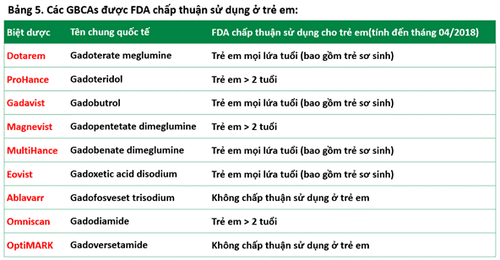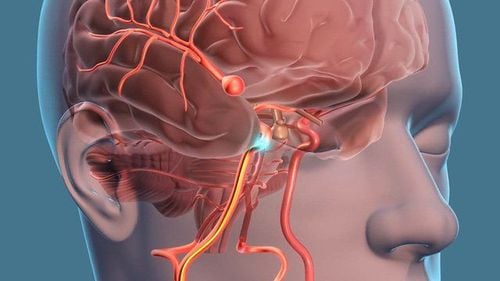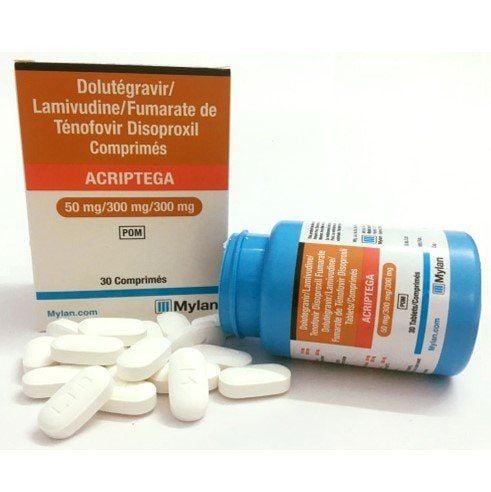This is an automatically translated article.
The article was written by MSc Nguyen Le Thao Tram - Doctor of Diagnostic Imaging, Department of Diagnostic Imaging - Vinmec Nha Trang International General Hospital.Contrast drug with base "gadolinium", based on paramagnetic properties acting on protons of water molecules, containing Hydrogen (H) atom - is a basic element in magnetic resonance imaging technique, contributing to alter the contrast of the examined tissue.
1. What are some special subjects that need to be kept in mind when using contrast agents?

Phụ nữ có thai và cho con bú cần có chỉ định của bác sĩ trước khi tiêm thuốc cản quang
1.1 Pregnancy and lactation Magnetic contrast agents can cross the placenta and are excreted in breast milk in very small amounts.
However, there are not many research data on the harmful effects of the drug on the fetus when using the usual dose. Although there is no absolute contraindication for pregnant women, contrast agents should only be used when absolutely necessary for diagnosis. When necessary, drugs with low risk factors should be used.
For nursing women, less than 0.04% of the drug is excreted in breast milk in the first 24 hours, less than 1% of the drug in milk is absorbed from the infant's gastrointestinal tract, so the amount absorbed young people get less than 0.0004% of the maternal dose of the drug from breast milk, which is much less than the allowable dose in infants. Thus, in general, contrast agents can be used safely in lactating women. However, if concerned, the mother and doctor can discuss and stop breastfeeding and express milk within 24 hours.
In the case of pregnant or lactating mother but accompanied by renal failure, the contrast agent from Gadolinium should not be used.
1.2 Children Magnetic contrast agents can be given to children (including infants) at the same dose as adults (0.1mmol/kg). However, the FDA approves the use of contrast agents in children specifically as follows:

Bảng GCBAS được FDA chấp thuận sử dụng cho trẻ em
2. Contraindications of contrast agents?
There are very few contraindications for contrast agents. However, if you are in one of the following situations, you should consider using the drug:Have a history of allergy to gadolinium-based contrast agents. Severe renal failure (glomerular filtration rate eGFR < 30ml/min/1.73m2), acute renal failure, leading to the risk of glomerular fibrosis. Women who are pregnant or suspected of being pregnant.
3. What is the time interval between using contrast agents and Iodine contrast agents?
To limit the risk of nephrotoxicity, the following recommendations are made:Patients with normal or slightly decreased renal function (eGFR >30 ml/min/1.73m2). 75% of both gadolinium and iodine are eliminated after 4 hours. There should be an interval of 4 hours between the two injections of the iodine and gadolinium contrast agent. Patients with severely reduced renal function (eGFR <30 ml/min/1.73m2), or on dialysis. There should be an interval of 7 days between the 2 injections of the iodinated contrast agent and gadolinium.
4. What is the time difference between using 2 times of magnetic contrast agent?
Patients with normal or slightly decreased renal function (eGFR >30 ml/min/1.73m2). 75% of the extracellular gadolinium contrast agent is eliminated after 4 hours. There should be an interval of 4 hours between 2 injections of gadolinium contrast agent. Patients with severely reduced renal function (eGFR <30 ml/min/1.73m2), or on dialysis. There should be an interval of 7 days between 2 injections of gadolinium contrast agent. The above article uses materials from some colleagues, as well as references to documents from a number of specialized domestic and foreign websites.
Customers can directly go to Vinmec Health system nationwide to visit or contact the hotline here for support.
MORE:
What is Contrast? Contrast removal process Matters needing attention about contrast in CT














